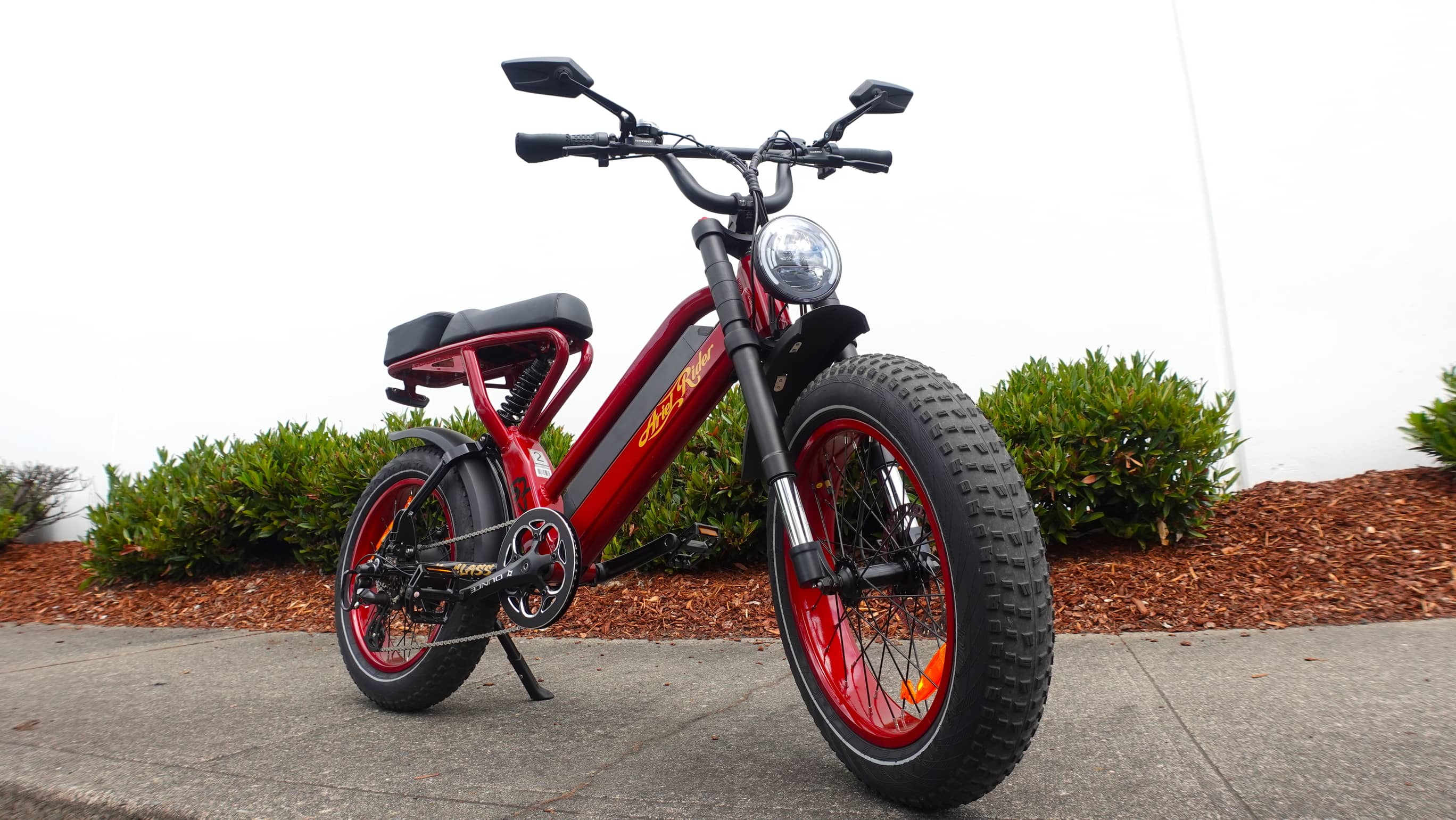Range! It’s a very common question that we receive...
What’s the range of your bikes on a single charge?
One of the most frequently asked questions we encounter revolves around the range of our electric bikes on a single charge. Many individuals harbor a significant misconception about electric vehicles, particularly when it comes to motorized bikes. They often assume that these electric bikes function in the same manner as traditional gas-powered ones, merely substituting electricity for gasoline. As a result, they expect an exact range to be specified by the manufacturer, similar to what they might find in a gas-powered vehicle's specifications.
However, it’s essential to understand that even gas-powered cars do not consistently consume fuel in accordance with the figures presented on the manufacturer’s spec sheet. There are several critical factors that can influence the range of any vehicle, including the weight being carried, the road conditions, and even the weather. For instance, the slope of the road can significantly impact how much energy is consumed during a trip.
In our experience, we primarily observe variations in oil consumption in our cars due to factors such as traffic patterns and road conditions. Interestingly, other factors, such as the weight of the passengers, do not seem to have as much of an impact on fuel efficiency. This is largely because the average car in the United States weighs around 4,000 lbs*. Therefore, if you add an additional 200-300 lbs of weight into the vehicle, it doesn’t drastically affect the overall oil consumption.
When we shift our focus to electric bikes, the scenario changes quite a bit. Electric bikes are significantly lighter than the average car, which means that every extra pound you add will have a more pronounced effect on your overall range. 
Here are some of the key factors that can genuinely affect the range of your electric bike:
- Riding Behavior: The way you ride your bike, including how often you use the throttle versus pedal assist, can greatly influence your range.
- Overall Load on the Electric Bicycle: The total weight being carried, including any cargo or accessories, plays a crucial role in determining how far you can go on a single charge.
- Weight of the Rider: The rider's weight is another significant factor that can impact the bike's performance and range.
- Weather Conditions: Adverse weather, such as strong winds or rain, can also affect how efficiently your bike operates.
- Traffic Conditions: Stop-and-go traffic can drain your battery more quickly than a smooth, uninterrupted ride.
- Slope of the Terrain: Riding uphill will consume more energy than riding on flat ground, which can significantly reduce your range.
The factors listed above can drastically change the amount of energy you’re able to extract from a single charge. In fact, you can potentially increase the range of your electric bike by nearly five times simply by using pedal assist on level 1. This method is far more efficient than riding at full throttle with the same load, allowing you to enjoy longer rides without the constant worry of running out of battery.
As you prepare for your next long bike trip and want to maximize your battery power, consider these helpful tips before you set off:
- Keep it Light: Only take what you truly need with you. The less weight you carry, the better your range will be.
- Do Not Use the Throttle: While it can be exhilarating to hit full throttle, especially when cruising down the beach, opting for pedal assist (level 1) can significantly extend your range. You might be surprised at how easy and enjoyable it is to ride this way.
- Know the Route Before You Go: If you’re venturing onto a road for the first time, it’s wise to check the traffic conditions beforehand. This not only helps you avoid frustrating stop-and-go situations but also enhances your overall safety during the ride.
- Be Ready: Always double-check that your battery is fully charged before you embark on your journey. A fully charged battery is essential for ensuring you can make the most of your ride without any unexpected interruptions.
By keeping these considerations in mind, you can enhance your riding experience and make the most of your electric bike's capabilities. Whether you’re commuting, exploring new trails, or enjoying a leisurely ride, understanding the factors that affect your bike's range will empower you to ride smarter and longer.
*The average car in the U.S. weighed over 4,000 pounds in 2010, up from an average of 3,221 pounds in 1987. Source
** Personal advice: I, personally own a C-250 which I use literally every day. Since I’m working very close to the office, my commute isn’t even 20 minutes. However, sometimes I do have to charge my bike 2-3 times a week. Where under normal circumstances it should be just once. The only reason is, I weigh 220 lbs (Hey! I’m 6′ 2″), and I carry my work bag which usually has my camera, laptop, iPad, a notebook and a gazillion unnecessary stuff which usually ends up weighing about 37 lbs (we seriously just weighed it), my gym bag which also has a ton of unnecessary stuff in it, 3 meals, and usually my online shopping spree deliveries which I usually get them delivered to our office. So all in all the stuff that I carry including me weighs about 305 lbs. And sadly within that less than 20-minute commute, there are exactly 11 traffic lights which I usually end up stopping at each and every one of them almost Every day (I’m really lucky like that). If you don’t believe how much I shop online, the above photo of C-250 isn’t a prop photo, it’s an actual scene where I was carrying these boxes home and wearing my other 2 bags on my back and shoulder.
[caption id="attachment_15585" align="aligncenter" width="300"] My typical Monday afternoon.[/caption]
My typical Monday afternoon.[/caption]





